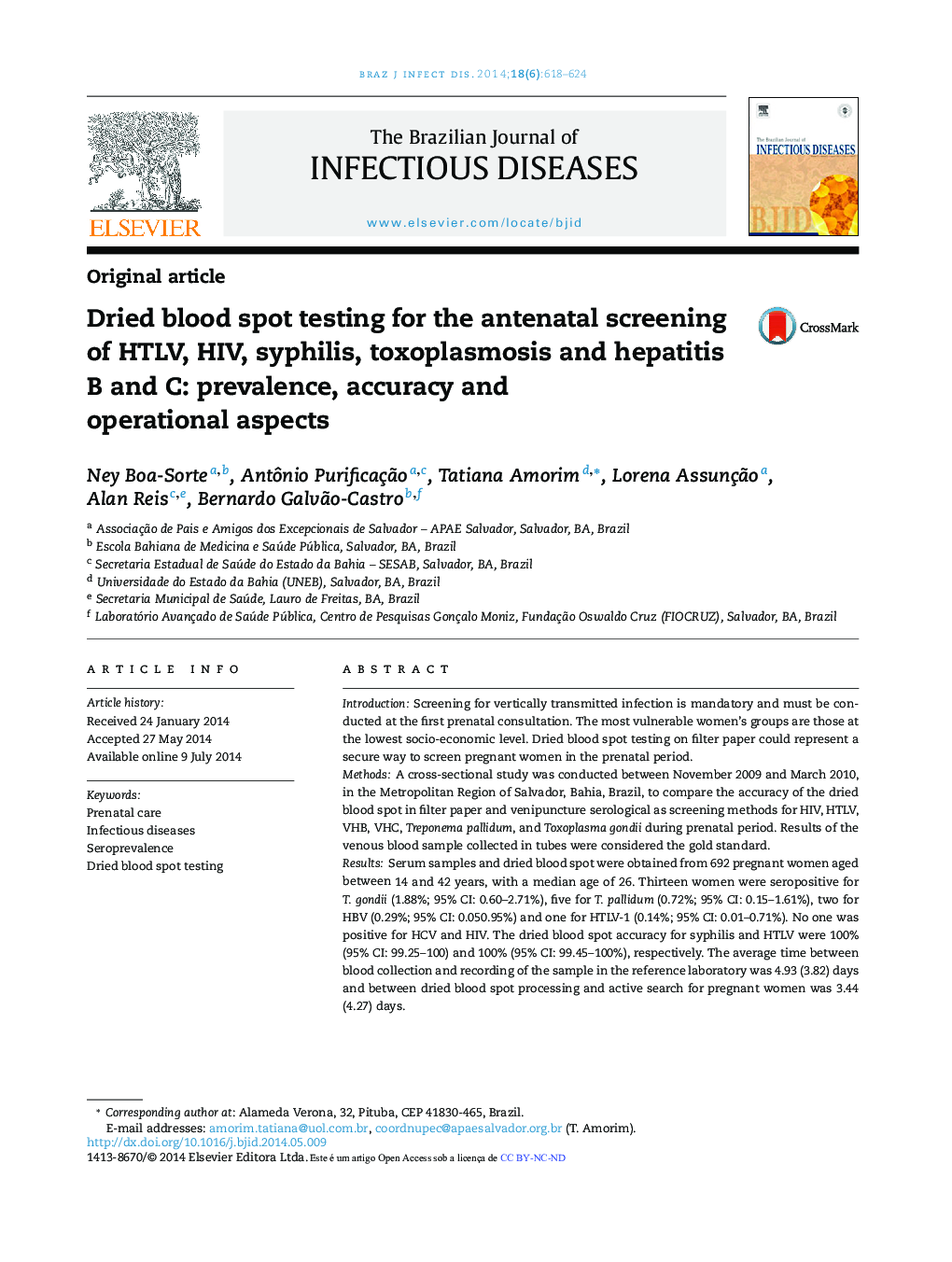| Article ID | Journal | Published Year | Pages | File Type |
|---|---|---|---|---|
| 3343900 | The Brazilian Journal of Infectious Diseases | 2014 | 7 Pages |
IntroductionScreening for vertically transmitted infection is mandatory and must be conducted at the first prenatal consultation. The most vulnerable women's groups are those at the lowest socio-economic level. Dried blood spot testing on filter paper could represent a secure way to screen pregnant women in the prenatal period.MethodsA cross-sectional study was conducted between November 2009 and March 2010, in the Metropolitan Region of Salvador, Bahia, Brazil, to compare the accuracy of the dried blood spot in filter paper and venipuncture serological as screening methods for HIV, HTLV, VHB, VHC, Treponema pallidum, and Toxoplasma gondii during prenatal period. Results of the venous blood sample collected in tubes were considered the gold standard.ResultsSerum samples and dried blood spot were obtained from 692 pregnant women aged between 14 and 42 years, with a median age of 26. Thirteen women were seropositive for T. gondii (1.88%; 95% CI: 0.60–2.71%), five for T. pallidum (0.72%; 95% CI: 0.15–1.61%), two for HBV (0.29%; 95% CI: 0.050.95%) and one for HTLV-1 (0.14%; 95% CI: 0.01–0.71%). No one was positive for HCV and HIV. The dried blood spot accuracy for syphilis and HTLV were 100% (95% CI: 99.25–100) and 100% (95% CI: 99.45–100%), respectively. The average time between blood collection and recording of the sample in the reference laboratory was 4.93 (3.82) days and between dried blood spot processing and active search for pregnant women was 3.44 (4.27) days.ConclusionsThe use of dried blood spot may represent a secure way to expedite access to results of vertically transmitted diseases in the prenatal period, particularly in regions with scarce healthcare resources.
